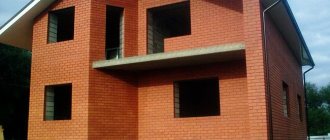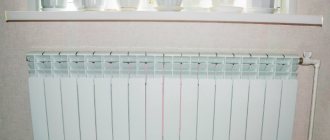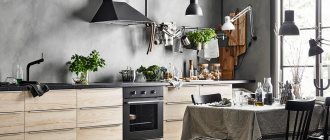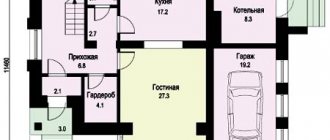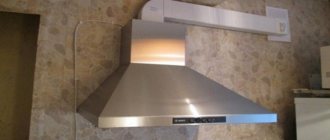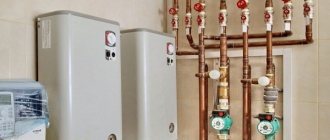Thanks to the imagination of a person, today a home can be made in any design, which differs in layout and distribution of space. Ventilation in the house may not always correspond to the area and, in this case, it is not able to cool the room in the summer heat. It is for this reason that it is worth air conditioning your home. Let's look at all the different air conditioning systems that can be installed in your home.
Features of air conditioning in a private house
When choosing an air conditioning system for a country house, consider:
- system power. This parameter is selected according to the dimensions of your building. In this case, it is worth taking into account all heat sources, general illumination and the number of permanent residents. Because if the power of the air conditioning systems for the house is excessive, then the electricity will increase. And if, on the contrary, the power is not enough, then the air conditioner will no longer cope with the assigned tasks. That is why specialists calculate power.
- energy efficiency of the system. The higher this parameter, the more expensive the air conditioner will cost you. But at the same time, the higher the energy efficiency of the installation, the lower the energy consumption will be.
- type of compressor. The right solution for a cottage is an inverter compressor. This type economically consumes electricity, is characterized by silent operation and smooth adjustments. If we are talking about small air conditioners for a country house, where you visit only in the summer, give preference to non-inverter units.
- air intake function. The best option, if your house is built in an ecological place, would be to have an air intake function rather than a filtration function.
- exterior and interior. The split system will inevitably affect the exterior and interior of the house. Think in advance where you will install the indoor and outdoor units. Or maybe you install a duct or cassette system, where the blocks are not so noticeable?
Technical characteristics overview
If you already know which type of air conditioner is best suited for your home and have decided on your budget, it would be a good idea to look at the product data sheet to learn more about the technical characteristics. They are no less important than the number of modes or type of compressor.
Let's consider the parameters on which the energy consumption and ease of use of the device depend: power, noise, energy efficiency, control method.
Parameter No. 1 – power and working area
The choice of power is directly affected by the area of the room. It is customary to calculate based on the ratio: to cool 1 m² of area, 100 W are required.
Therefore, for a 20-meter living room you need to buy a unit with a power of 2-2.2 kW. But do not forget that powerful devices produce louder noise.
When choosing, do not focus on the exact dimensions of the room’s area; it is better to add another 15-20% to the actual data. This way the device will not experience overload and it will be easier to cope with its task.
For larger rooms, a more detailed calculation is required.
There are calculators that take into account such accompanying factors as:
- presence of windows and glazing area;
- number of floors, location of the apartment (corner, sunny side), ceiling height;
- average number of permanent residents;
- the presence of electric lights and heaters - radiators, stoves, etc.
But for a standard room of 15-20 m², careful calculations are not required; average values are usually sufficient. Some manufacturers, in addition to power, also indicate the recommended maximum room area.
Parameter No. 2 – noise level of the indoor unit
There are always household appliances in the house that produce various noises. For example, a refrigerator that periodically turns on and sometimes hums quite loudly. It is clear that an additional “loud” device is undesirable, so noise level is one of the important parameters.
For inverter models it is usually less. Some devices in cooling mode produce a quiet and monotonous noise not exceeding 20 dB. This is an excellent indicator, suitable for bedrooms and children's rooms.
Linear models “sound” much louder - their noise level reaches 35-45 dB. This is normal for a living room where residents are present during the day, but for a bedroom it is uncomfortable
Unfortunately, manufacturers do not always provide reliable information. Sometimes in the technical data sheet you can only find the level characteristic of the device operating in “night” mode. We advise you to look for reviews from real users before purchasing.
Parameter No. 3 – energy consumption class
By ignoring the energy efficiency of the unit, you can end up with a large sum of money when paying utility bills in the hot months. It is better to immediately choose an economical device - and most likely it will be an inverter.
Energy efficiency is indicated by the letter symbols A ... G. Economical ones are marked with the sign A, and now almost all modern models correspond to this class. But it’s even better if the air conditioner you choose is class A++ or A+++.
Parameter No. 4 – availability of additional features
Let's look at what other useful additions home air conditioners have. But, before looking for a model with the listed capabilities, decide whether you really need them. Each useful option increases the overall cost of the device.
Night mode , also known as sleep mode. This is the ability of the air conditioner to operate at low power with minimal noise - ideal for a night's rest.
The standard temperature for night mode is usually 2-3° lower than daytime. This promotes longer and healthier sleep
Timer that regulates the exact on/off time. An excellent addition, convenient for everyone - when you return home, you don’t have to wait for comfortable conditions, the split system will cool the air to the set temperature when you arrive.
3D flow – the ability to adjust the air flow in all directions. Traditionally designed blinds only direct air up/down, while with the 3D function they additionally move left/right.
There are premium models that direct cooled air to the location of the remote control. If you sit with the remote control on the sofa, the breeze will blow towards the sofa.
Turbo mode is necessary for operational cooling. If you forget to set the timer, this function will come in handy - the device will turn on at full power and change the microclimate in the room in a matter of minutes.
Self-diagnosis is the ability of a device to independently identify faults and report them to the consumer by displaying alphanumeric characters on a digital display.
The self-diagnosis function is only available on modern models with digital displays. Tips for solving problems can be found in the operating instructions.
Air purification is carried out thanks to the filter system installed in the indoor unit. It can consist of one or several filters: the simplest devices are equipped with one that traps dust, while more expensive ones have fine filters that prevent even the smallest particles and odors from passing through.
Filters require timely replacement, but they are not cheap, and here you have to choose between air quality and efficiency.
Decide in advance whether you need these functions and do not forget: the more complex and functional the device, the greater the likelihood that one of the elements will fail.
Window monoblock air conditioner
It is a single block that is mounted in a window or doorway. It is used, as a rule, in country houses, since it is not possible to install it in the plastic windows of city apartments.
Pros:
- budget system.
- consumes a minimum of electricity.
- practical.
- easy installation.
- small-sized.
Minuses:
- unattractive appearance.
- There is no way to install it in a plastic window.
- There is no possibility of using blinds; the illumination of the room is also reduced.
- noisy work.
- low power.
- in cold weather, cold air from the street enters the room.
Floor standing monoblock air conditioner
The system is a single unit with a corrugated hose that is connected to a window or ventilation. Control occurs using a remote control. The model is not as primitive as the previous one. Also well suited for a dacha, where the owners spend time only in the summer.
Pros:
- mobility. It is possible to move the air conditioner to other rooms.
- ease of installation and dismantling.
- special filters included in the system will clean the air of dust and provide it with ions that are beneficial to health.
Minuses:
- low power.
- unattractive appearance.
- the need to frequently empty a special water tank.
Supply and exhaust ventilation with heat recovery
Air handling unit with recovery
One of the effective and practical options for installing ventilation in a private home is supply and exhaust ventilation with heat recovery.
In this case, the air exchange in the house is performed by a central supply and exhaust unit. Outside air entering the installation is cleaned of dust, heated in a recuperator, reheated in a water or electric heater and distributed through galvanized steel air ducts to residential premises.
Recuperation is the use of heat from exhaust air to heat supply air. For example, to heat 1000 m3/hour of air from -28 to +20, approximately 15 kW of thermal (hot water) or electrical energy is needed. Recuperation can save up to 80% of these costs. Read more about recovery.
The automation of the air handling unit allows you to flexibly control its operation: set the temperature, regulate the amount of air, change the speed, etc.
Maintenance of the air handling unit mainly consists of regularly replacing air filters. On average, it is recommended to change filters at least once a quarter.
Modern air handling units tend to operate quietly, especially at low fan speeds.
The approximate cost of supply and exhaust ventilation with heat recovery for a private home can be calculated using the online calculator on our website.
Air handling units with recovery, of various designs: vertical floor, horizontal floor, ceiling-mounted
Like any system, supply and exhaust ventilation with heat recovery in a cottage has its strengths and weaknesses.
Pros:
- High air quality all year round
- Filtration and heating of outside air
- Heat recovery
- Convenient control
Minuses:
- Space required for equipment and air ducts
- Relatively high cost
- Professional installation required
A description of the supply and exhaust ventilation with recovery and the air conditioning system of the cottage can be seen in this video
Floor standing monoblock air conditioner without duct
It is a single unit, which for full operation you will only need to unpack, place in one of the corners of the room and turn on. Also well suited for a small country house, which is used only in the summer. When the season ends, you can take the air conditioner with you and use it in the city.
Pros:
- ease of use.
- mobility.
- small size.
- lack of installation.
- additional heating and drying functions.
- attractive design.
Minuses:
- low power.
- the need to frequently pour water into a special container, and also to frequently empty a special tank.
- The device is noisy.
- not suitable for rooms without windows and with high humidity levels, such as basements.
- It is impossible to set the exact temperature.
Advanced Features
What are the advanced features? First, additional filters. Remember that the main task of the filter in an air conditioner is to protect the fan and heat exchanger from dirt and dust.
If the heat exchanger becomes clogged, heat removal will deteriorate and the compressor will burn out. All other advantages are naked advertising. Therefore, do not be fooled by all sorts of catechin, apple and vitamin C filters.
The same applies to the ionization function. Their ionization unit is so large that you will never feel the real effect from it. Unless you convince yourself otherwise.
All these additional functions are an elementary marketing ploy in order to sell the air conditioner at a higher price and stand out from the competition.
Well, in the end, we will give a rating of the most popular models of split systems according to the website expertcen.ru, indicating their characteristics, main advantages and disadvantages. To view the information, click on the tab with the name.
The best inexpensive air conditioners
The best universal split systems
The best air conditioners for the bedroom
Wall split system
Split is translated from English as separate, which is why all systems with an indoor and outdoor unit have the prefix - split. The wall-mounted split system is the most common and most suitable for a small country house. For example, if one block is enough for you for a large living room, which is combined with a kitchen. It is best to place the block in the center of the longest wall. If there is a sofa under the unit where family members like to spend time, then it makes sense to install a transparent screen so that the air flow does not interfere with vacationers. When installing the unit in a bedroom or nursery, make sure that the air flow is not directed towards the bed.
Pros:
- simple controls.
- heating in cold weather.
- air filtration if necessary.
- energy savings in some models.
- air ionization in some models.
- attractive design.
Minuses:
- complex installation.
- need for professional service.
Combined ventilation
Ventilation in a residential building according to the natural inflow/mechanical exhaust scheme
A combined ventilation system in a private house is, as a rule, a scheme with mechanical exhaust and natural inflow.
Mechanical exhaust is performed by one or more ducted exhaust fans. Exhaust fans operate constantly to ensure stable air exchange. To save electrical and thermal resources, you can use speed controllers for exhaust fans with manual or automatic control (for example, by CO2 sensor).
The air flow is organized naturally. For this purpose, window or wall supply valves are used.
Supply valves do not contain moving parts, and air enters the room through them due to the vacuum created by exhaust fans.
In this case, supply air enters the house without preheating. Only this is not a problem if a properly selected heating device, ideally an open radiator, is installed under the supply valve.
This ventilation scheme for a private house can be described as relatively inexpensive and practical. The world leader in the field of ventilation systems of this type is French.
Advantages:
- Relatively inexpensive installation
- Minimum space for equipment
- Minimum maintenance
Flaws:
- No supply air filtration
- No inflow heating
- Minimum air exchange rates
Cassette split system
Well suited for houses that differ in their dimensions. It will support any interior, since after installation it is a system located at the same level as the ceiling. The size of the cassette air conditioner is 600 by 600 mm, which coincides with the size of the ceiling tiles. This type of home air conditioning is suitable for central placement in the room.
Pros:
- uniform air flow directed to all four sides.
- An ideal system for large rooms.
- silent operation.
- suitable for any interior.
Minuses:
- Suitable only for installation in conjunction with a suspended or suspended ceiling.
Why is it necessary to design an air conditioning system before starting renovation work?
At first it may seem that design is a step that can be skipped and thereby save money. But we are sure that this opinion is wrong and here are the reasons why the design of the engineering system should be carried out before the start of repair work:
- Only under such conditions can engineering communications be integrated into the interior design.
- Budgeting. Design will allow you to see the exact estimate of the project before installation work begins. This way, you can choose a system within the strict limits of your allocated budget.
- Possibility of integration with other engineering systems (ventilation, steam humidification).
- Accurate coordination of all work with “allied workers” (builders, designers, installers, etc.).
- High quality result. Design will allow you to create an effective air conditioning system that best suits all the parameters and features of the room.
As a result, you get a system according to your budget that works efficiently, is well placed and works in conjunction with other engineering systems.
Duct split system
In duct systems, unlike wall and cassette systems, there is the possibility of zoning, that is, it is possible to set the desired temperature in each room separately. It is best to install such an air conditioner in a large building, since the system is not a budget one.
Pros:
- zoning (setting the desired temperature in each zone).
- the system is reliable.
- attractive grille design that can be customized to your liking.
Minuses:
- The system is not a budget one.
- installation is not budget-friendly.
- The system requires professional regular maintenance.
Some comfort issues
Comfort in the house in terms of ventilation is determined not only by the gas composition. The temperature of the incoming air, the pattern of its distribution throughout the room and its mobility are very important.
The entry of cool air into a room can create a convection current, which is perceived as an unpleasant draft. Such a room will always be uncomfortable, even at normal temperatures.
Considering the high requirements for air exchange, neutralizing such “drafts” often requires taking special measures, and when developing the installation of cottage ventilation, this circumstance must be taken into account.
Qualification and accurate calculations are what we guarantee our clients along with modern equipment and high-quality installation.
Multi-split system
If you decide to focus on wall-mounted or cassette models, but you are confused that external units will spoil the facade of the building, pay attention to the multi-split system. The installation consists of several indoor units and a single external unit.
Pros:
- only one external unit, instead of several.
- Only one external unit produces noise, not several.
- Only one external unit will have to be serviced (cleaning, refilling with refrigerant), and not several.
- You can place both wall-mounted and cassette blocks.
Minuses:
- installation is not budget-friendly.
- zoning does not apply to this system. If you turn on the heating in one room, you won't be able to turn on the cooling in another.
Cottage ventilation and modern materials
Previously, such strict requirements were not imposed on the home ventilation system. Today, when creating a cottage ventilation project, our engineers certainly take into account the materials and type of external enclosing structures of the house.
The fact is that traditional construction technologies left many opportunities for the influx of outside air: the influx was organized through leaks in the enclosing structures (windows and walls). In those conditions, a simple hood was enough to maintain a comfortable atmosphere in the house. In addition, predominantly homogeneous walls with good vapor permeability quite effectively removed water vapor outside without trapping it in their thickness.
Sealed windows are the cause of high humidity in the house. Installing airtight windows and doors makes a world of difference. Modern windows and doors have virtually no gaps, which were considered quite seriously as part of the ventilation system in old building codes. And without them, the hood practically does not work. It only creates a vacuum, which does not lead to ventilation. The solution is to create supply channels, which will be discussed below.
Eliminating cracks is not the only innovation that has to be responded to by improving the cottage ventilation system. The use of materials with low vapor permeability also makes a contribution: vapor barriers, impermeable insulation, clinker cladding and others.
Severe limitation of the natural release of moisture through the walls requires the use of new solutions and careful calculation of air exchange.

